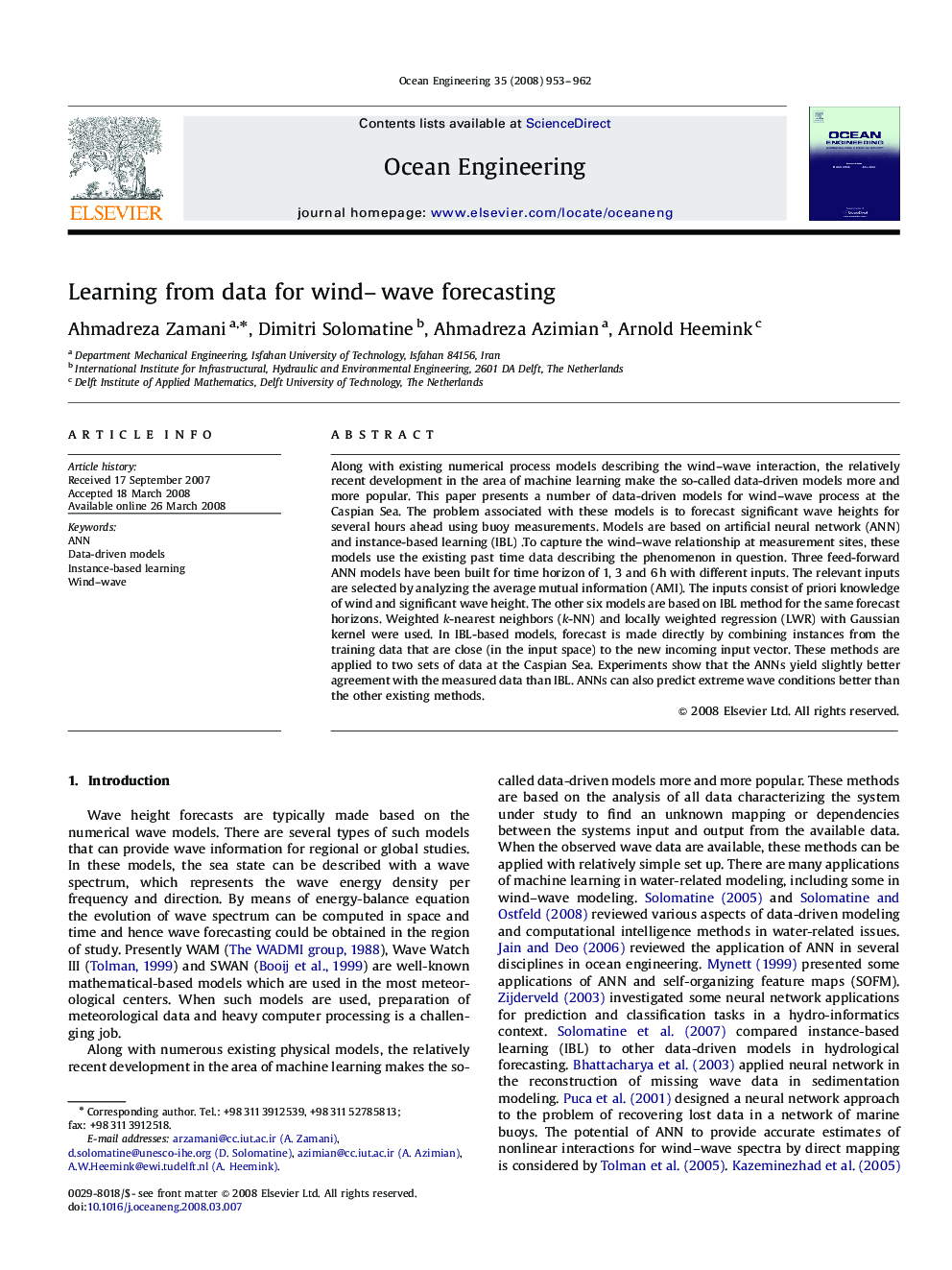| Article ID | Journal | Published Year | Pages | File Type |
|---|---|---|---|---|
| 1726975 | Ocean Engineering | 2008 | 10 Pages |
Along with existing numerical process models describing the wind–wave interaction, the relatively recent development in the area of machine learning make the so-called data-driven models more and more popular. This paper presents a number of data-driven models for wind–wave process at the Caspian Sea. The problem associated with these models is to forecast significant wave heights for several hours ahead using buoy measurements. Models are based on artificial neural network (ANN) and instance-based learning (IBL) .To capture the wind–wave relationship at measurement sites, these models use the existing past time data describing the phenomenon in question. Three feed-forward ANN models have been built for time horizon of 1, 3 and 6 h with different inputs. The relevant inputs are selected by analyzing the average mutual information (AMI). The inputs consist of priori knowledge of wind and significant wave height. The other six models are based on IBL method for the same forecast horizons. Weighted k-nearest neighbors (k-NN) and locally weighted regression (LWR) with Gaussian kernel were used. In IBL-based models, forecast is made directly by combining instances from the training data that are close (in the input space) to the new incoming input vector. These methods are applied to two sets of data at the Caspian Sea. Experiments show that the ANNs yield slightly better agreement with the measured data than IBL. ANNs can also predict extreme wave conditions better than the other existing methods.
